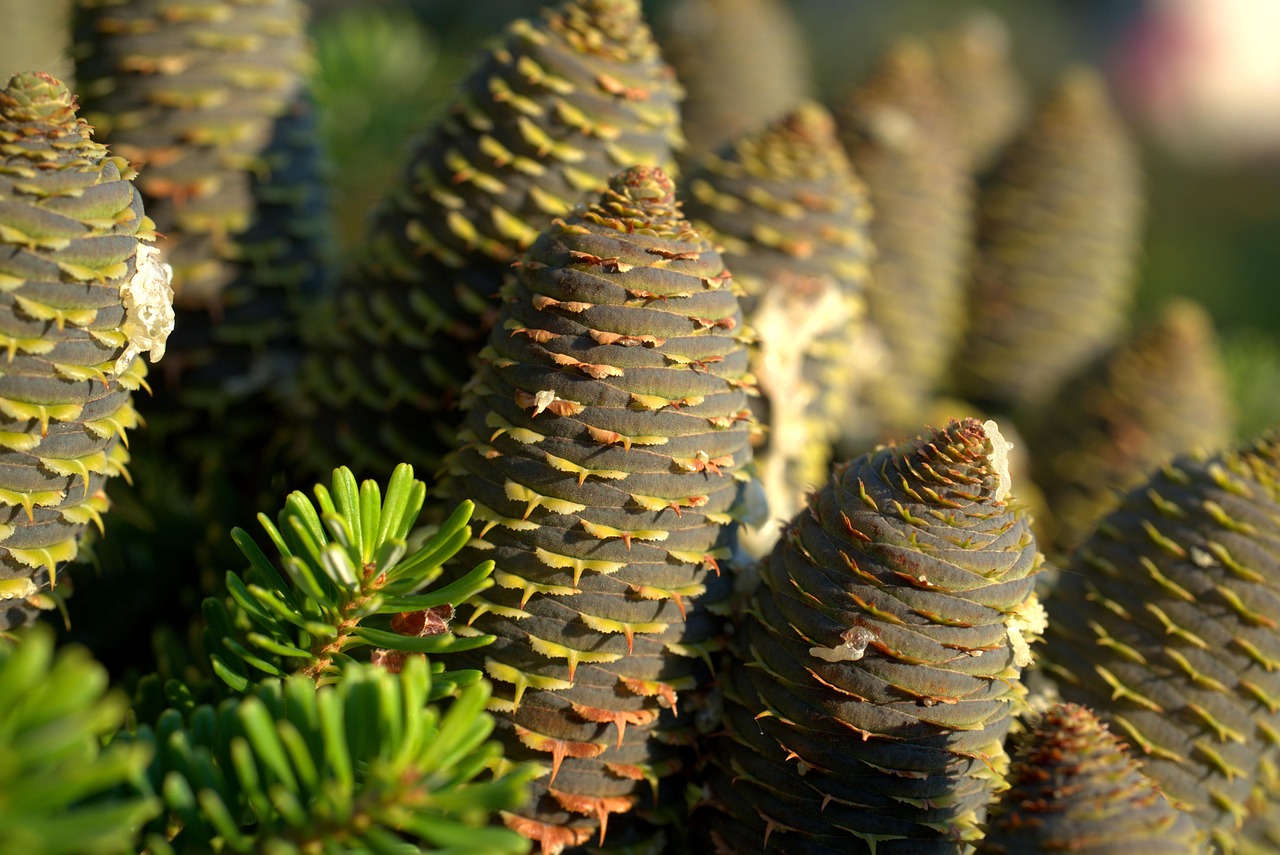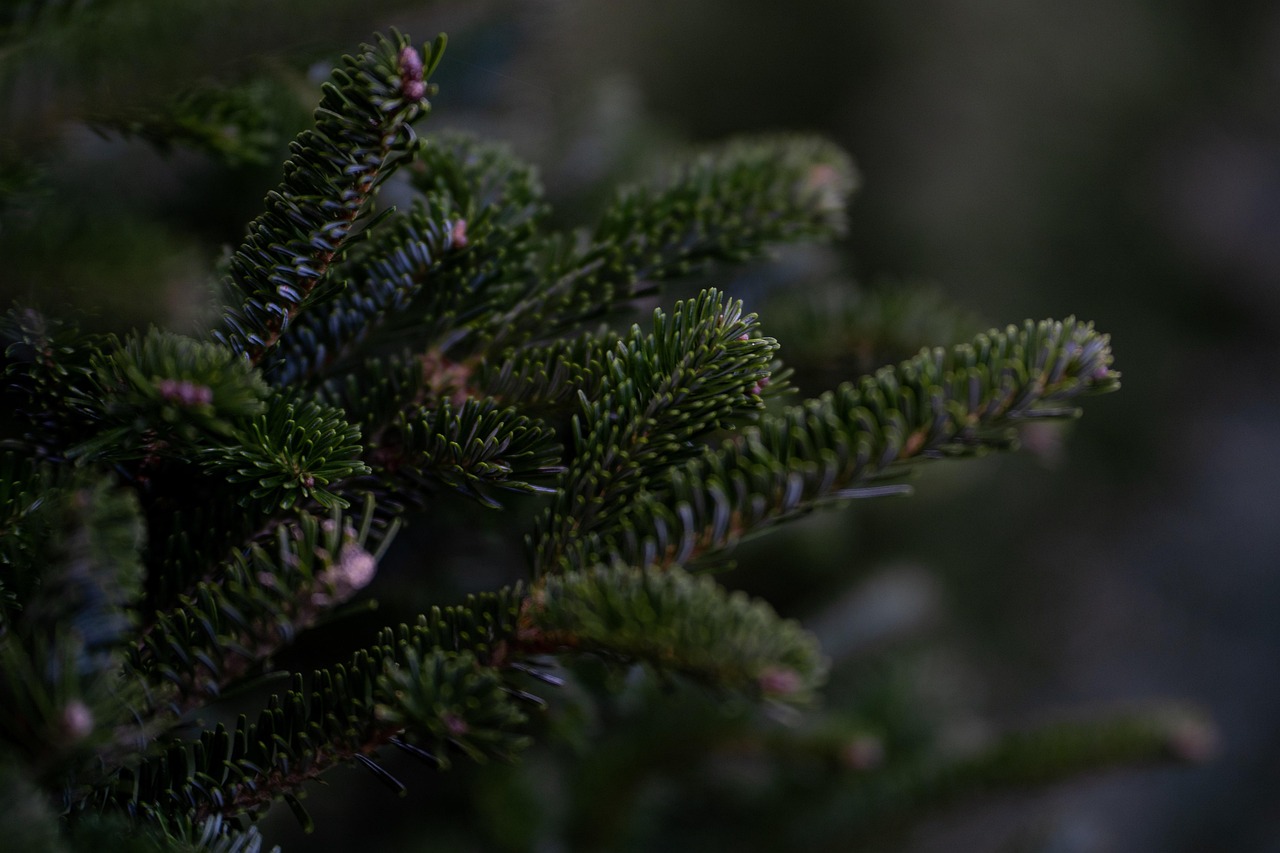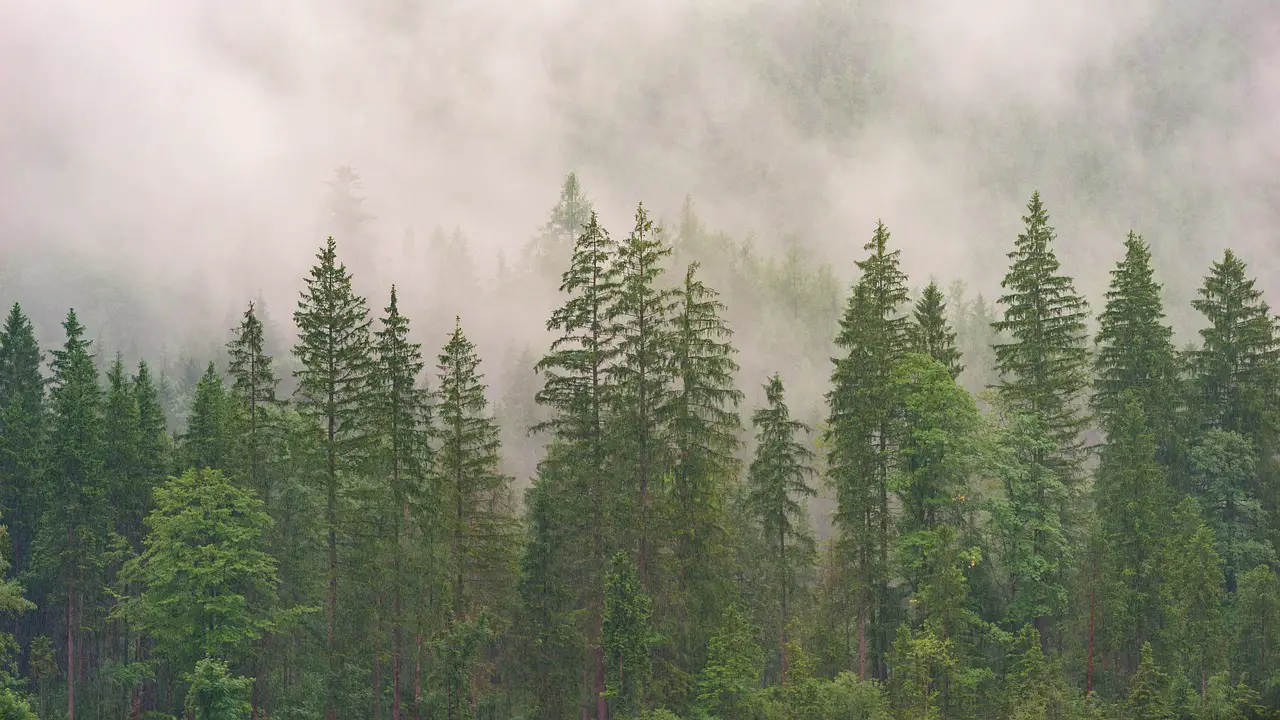The Douglas Fir tree (Pseudotsuga menziesii) exhibits a growth rate that can reach up to 3 feet per year under optimal conditions. This rapid growth makes it a valuable species for timber production, while also providing critical habitat in forest ecosystems.
The Douglas Fir is one of the most significant tree species in North America. Known for its strength and durability, it is often used in construction and furniture making. Its growth rate varies based on several factors, including soil quality, water availability, and climate conditions. In ideal environments, these trees can thrive and achieve remarkable heights, contributing not only to timber resources but also to biodiversity.

In terms of habitat, the Douglas Fir plays a crucial role in forest ecosystems. It provides shelter and food for various wildlife species. The tree’s dense foliage offers nesting sites for birds and habitat for small mammals. Understanding the growth rate of Douglas Fir trees is essential for forest management and conservation efforts.
Factors Influencing Growth Rate
The growth rate of Douglas Fir trees is influenced by a combination of environmental and biological factors. These include soil nutrients, water availability, light exposure, and competition from other plants. Each factor plays a critical role in determining how quickly these trees can grow.
- Soil Quality: Rich, well-drained soils promote faster growth. Douglas Fir prefers slightly acidic soils with good organic matter content.
- Water Availability: Adequate moisture is essential during the growing season. Drought conditions can significantly slow down growth.
- Light Exposure: Douglas Fir requires full sunlight to reach its maximum growth potential. Shaded areas may hinder its development.
- Competition: Other vegetation can compete for resources. Thinning surrounding plants can enhance growth rates.
Additionally, the age of the tree affects its growth rate. Young Douglas Fir trees tend to grow faster than older trees. As they mature, their growth rate typically slows down. This phenomenon can influence both timber yield and habitat quality over time.

Growth Rate Variability by Region
The growth rate of Douglas Fir varies significantly across different regions due to climatic differences. In the Pacific Northwest, where rainfall is abundant and temperatures are mild, these trees can achieve impressive growth rates. Conversely, in drier regions, their growth may be stunted.
| Region | Average Growth Rate (feet/year) | Conditions |
|---|---|---|
| Pacific Northwest | 2-3 | Abundant rainfall, mild temperatures |
| California | 1-2 | Drier conditions, varied climates |
| Rocky Mountains | 1-2 | Higher elevation, cooler temperatures |
The data illustrates that the Pacific Northwest boasts the highest average growth rates for Douglas Fir trees. This region’s climate provides ideal conditions for their development, making it a prime area for forestry operations focused on timber production.
In addition to regional differences, the specific variety of Douglas Fir can also impact growth rates. There are two main varieties: the coastal form and the inland form. The coastal variety generally grows faster and taller than its inland counterpart due to more favorable growing conditions.

Implications of Growth Rate on Timber Production
The growth rate of Douglas Fir has significant implications for timber production. Rapidly growing trees yield timber more quickly, making them economically valuable for forestry operations. Moreover, understanding these rates assists in planning sustainable forest management practices.
Sustainable practices can include:
- Selective logging to ensure continued tree growth.
- Replanting harvested areas with young Douglas Fir saplings.
- Monitoring soil health and water availability to promote optimal growth conditions.
By implementing these practices, foresters can maintain healthy populations of Douglas Fir while meeting timber demands. This balance supports not only economic needs but also environmental sustainability.
Growth Rate and Its Effect on Habitat Quality
The growth rate of Douglas Fir trees significantly impacts the quality of their habitat. As these trees grow, they create a diverse ecosystem that supports various wildlife species. Understanding how the growth rate affects habitat features is crucial for conservation efforts.

Douglas Fir forests provide important resources such as food, shelter, and breeding grounds for numerous animals. The structure of the forest changes as the trees mature, influencing the types of species that can thrive in that environment. Here are some key ways in which growth rate affects habitat quality:
- Canopy Development: Fast-growing Douglas Firs create dense canopies. This canopy provides shade and protection for understory plants and animals, promoting biodiversity.
- Nesting Sites: Older Douglas Fir trees develop cavities that serve as nesting sites for birds and small mammals. The availability of these cavities increases with tree age, enhancing habitat complexity.
- Food Sources: As trees mature, they produce seeds and other organic materials that serve as food for various wildlife species. Healthy, fast-growing trees contribute to a rich food web.
Impact on Forest Floor Ecosystem
The forest floor ecosystem relies heavily on the growth and health of Douglas Fir trees. As these trees grow taller, they provide a unique microclimate that can affect soil moisture and temperature, which in turn influences ground vegetation and small animal populations. Factors include:
- Soil Health: Fast-growing trees often lead to improved soil health through leaf litter and nutrient cycling. This enriches the soil, supporting a diverse range of plants.
- Understory Vegetation: A dense canopy may limit sunlight reaching the forest floor initially. However, once established, a diverse understory can thrive, creating more habitats for insects and small mammals.
- Decomposition Rates: Higher leaf litter from rapidly growing trees accelerates decomposition rates, leading to richer organic matter in the soil. This supports various soil organisms.
Management Practices to Enhance Growth Rates
Effective forest management practices can enhance the growth rates of Douglas Fir trees. By implementing specific strategies, foresters can ensure healthier trees that provide better timber yields and habitat quality.
Silvicultural Methods
Silviculture involves managing forest growth, composition, and quality. Key methods include:
- Thinning: Thinning involves selectively removing some trees to reduce competition for resources among remaining trees. This practice encourages healthier growth rates.
- Pest Management: Monitoring and controlling pests can prevent damage to young trees. Healthy saplings are more likely to grow quickly and establish strong root systems.
- Site Preparation: Preparing the planting site by clearing debris and ensuring good soil conditions can facilitate faster growth for new saplings.
Monitoring Growth Progress
Regular monitoring of tree growth is essential for understanding how management practices impact Douglas Fir health and growth rates. Foresters can use various techniques, including:
- Height Measurements: Periodically measuring tree height helps assess growth rates over time.
- Dendrochronology: This science of tree-ring dating allows scientists to analyze historical growth patterns and understand how environmental factors have influenced growth.
- Health Assessments: Evaluating tree health through visual inspections can identify issues early on, allowing for timely intervention.
The Role of Climate Change
Climate change poses significant challenges to Douglas Fir growth rates. Changing weather patterns can affect rainfall, temperature, and overall growing conditions. Understanding these impacts is critical for future forestry management.
Key climate-related factors affecting growth rates include:
- Temperature Fluctuations: Warmer temperatures may accelerate growth initially but could lead to stress during drought conditions.
- Water Availability: Changes in precipitation patterns can lead to periods of drought or flooding, both of which can negatively impact tree health.
- Pest and Disease Pressure: Warmer climates may allow pests and diseases to thrive, posing additional risks to Douglas Fir populations.
Proactive management strategies must consider these changing conditions to maintain healthy forests and sustainable timber production.
Conclusion
The interplay between growth rate, habitat quality, and environmental factors is complex yet vital for maintaining healthy Douglas Fir populations. Understanding these elements allows for better forest management practices that ensure the sustainability of timber resources and wildlife habitats.
Ecological Importance of Douglas Fir Trees
The Douglas Fir tree is not only valuable for its timber but also plays a crucial role in maintaining ecological balance. Its presence in forest ecosystems supports various animal and plant species, contributing to biodiversity and overall forest health.
Douglas Fir forests serve multiple ecological purposes. They act as carbon sinks, help regulate water cycles, and provide essential habitats. Understanding these ecological roles emphasizes the importance of preserving and managing Douglas Fir populations sustainably.
Carbon Sequestration
One of the most significant environmental benefits of Douglas Fir trees is their ability to sequester carbon dioxide from the atmosphere. As they grow, these trees absorb CO2, storing carbon in their biomass. This process is vital for mitigating climate change.
- Biomass Accumulation: The rapid growth rate of Douglas Fir trees leads to substantial biomass accumulation, which enhances their carbon storage capacity.
- Long Lifespan: Mature Douglas Firs can live for several hundred years, allowing them to sequester carbon over long periods.
- Forest Management: Sustainable forestry practices that promote healthy growth and regeneration can maximize carbon sequestration potential.
Water Regulation
Douglas Fir trees also play a key role in regulating water cycles within their ecosystems. Their extensive root systems help stabilize soil and improve water retention, which can prevent erosion and promote groundwater recharge. Key factors include:
- Soil Stabilization: The roots of Douglas Fir help anchor the soil, reducing runoff and preventing sedimentation in nearby water bodies.
- Evapotranspiration: Trees release water vapor through a process known as transpiration. This contributes to local humidity and can influence precipitation patterns.
- Water Quality Improvement: Healthy forests filter pollutants from water before it reaches streams and rivers, maintaining water quality.
Biodiversity and Habitat Provision
The rich biodiversity found in Douglas Fir forests is largely due to the tree’s growth characteristics and the habitats it creates. These forests support a variety of wildlife, enhancing ecosystem resilience.
Wildlife Habitat
Douglas Fir trees provide shelter, food, and breeding grounds for numerous species. The structure of these forests creates diverse habitats that cater to different wildlife needs:
- Birds: Many bird species rely on Douglas Fir trees for nesting sites. The dense foliage offers protection from predators.
- Mammals: Small mammals such as squirrels and larger species like deer benefit from the cover provided by these trees. They find food sources in the form of seeds and foliage.
- Insects: The bark and wood of Douglas Fir are home to various insects, which in turn support insectivorous birds and other animals.
Plant Diversity
The growth of Douglas Fir also influences the plant community within its habitat. As these trees mature, they create microclimates that support various understory plants:
- Shade Tolerance: Certain plants thrive in the shade created by Douglas Fir canopies, including ferns and shade-tolerant shrubs.
- Nutrient Cycling: The leaf litter from Douglas Fir contributes organic matter to the soil, supporting diverse plant life.
- Plant Interactions: The presence of Douglas Fir can influence the distribution of other plant species, creating a unique ecological niche.
The Role of Douglas Fir in Climate Adaptation
As climate change continues to alter ecosystems, Douglas Fir trees play a significant role in helping both the forest and wildlife adapt. Their resilience and adaptability make them essential for future forest health.
Adaptation Strategies
Foresters and ecologists are exploring various strategies to enhance the adaptability of Douglas Fir forests in changing climates. Some key approaches include:
- Diverse Planting: Introducing genetic diversity through mixed-species planting can enhance resilience against pests and diseases.
- Climate-Smart Forestry: Implementing practices that consider future climate conditions can help maintain healthy forests.
- Restoration Projects: Restoring degraded areas with Douglas Fir can improve ecosystem functionality and resilience.
The Economic Value Beyond Timber
The economic significance of Douglas Fir extends beyond its use as timber. Various products derived from this tree contribute to local economies and communities.
Non-Timber Forest Products (NTFPs)
Douglas Fir forests provide an array of non-timber forest products that have economic value:
- Pine Nuts: The seeds of some Douglas Fir varieties are edible and can be harvested as a food source.
- Bark and Foliage: The bark is sometimes used for crafting materials, while foliage can be harvested for decorative purposes.
- Aromatic Oils: Extracts from Douglas Fir are used in essential oils and other products due to their pleasant scent.
This comprehensive understanding of the ecological and economic roles of Douglas Fir underscores its importance in both timber production and habitat provision. As we face environmental changes, managing these trees sustainably becomes even more critical for preserving our forests and supporting diverse ecosystems.
Sustainable Practices for Douglas Fir Management
As the demand for timber continues to grow, sustainable practices for managing Douglas Fir trees are essential. These practices not only support timber production but also ensure that the ecological functions of these trees are preserved. Forest management strategies focus on balancing economic needs with environmental health.
Best Management Practices (BMPs)
Implementing Best Management Practices (BMPs) is crucial for maintaining healthy Douglas Fir forests. These practices can help preserve water quality, protect wildlife habitats, and promote soil health:
- Buffer Zones: Establishing buffer zones around water bodies can prevent sedimentation and protect aquatic habitats from logging activities.
- Controlled Harvesting: Employing methods like selective cutting minimizes damage to surrounding trees and maintains forest structure.
- Soil Conservation: Techniques such as contour plowing and maintaining ground cover help prevent soil erosion and promote healthy root systems.
Community Involvement and Education
Engaging local communities in the management of Douglas Fir forests can lead to more sustainable practices. Education programs can inform residents about the importance of these trees and how they can contribute to their preservation:
- Workshops: Hosting workshops can teach community members about sustainable forestry techniques and the ecological importance of Douglas Fir trees.
- Volunteering Opportunities: Creating volunteer programs for tree planting, monitoring, and maintenance can foster a sense of stewardship among local residents.
- Partnerships: Collaborating with local organizations and schools can enhance awareness and support for conservation efforts.
The Future of Douglas Fir Trees
The future of Douglas Fir trees hinges on our ability to adapt to changing environmental conditions. As climate change continues to affect forests worldwide, it is vital to implement adaptive management strategies that consider future challenges:
- Research and Monitoring: Ongoing research into the effects of climate change on Douglas Fir growth rates and habitat quality will provide valuable insights for effective management.
- Genetic Diversity: Promoting genetic diversity within Douglas Fir populations can enhance resilience against pests, diseases, and climate variations.
- Restoration Initiatives: Restoration efforts in degraded areas can facilitate the return of healthy Douglas Fir populations, benefiting both timber production and ecosystem health.
By focusing on sustainability, we can ensure that Douglas Fir forests continue to thrive. This balance is critical not only for timber production but also for preserving the myriad benefits these trees provide to wildlife and the environment.
Final Thoughts
The Douglas Fir tree stands as a symbol of resilience and adaptability in North America’s forests. Its impressive growth rate makes it a key species for timber production, while its ecological roles support vibrant wildlife habitats. Understanding the complexities of Douglas Fir growth and its effects on both timber resources and ecosystem health is essential for sustainable management practices.
The interplay between environmental factors, management strategies, and community involvement shapes the future of these vital trees. By prioritizing sustainability, education, and adaptive practices, we can protect Douglas Fir populations and ensure they continue to provide valuable resources and habitats for generations to come.
The information gathered throughout this article highlights the importance of integrating ecological knowledge with economic practices. As we face environmental changes, our commitment to responsible stewardship will determine the health of Douglas Fir forests and the diverse ecosystems they support.
